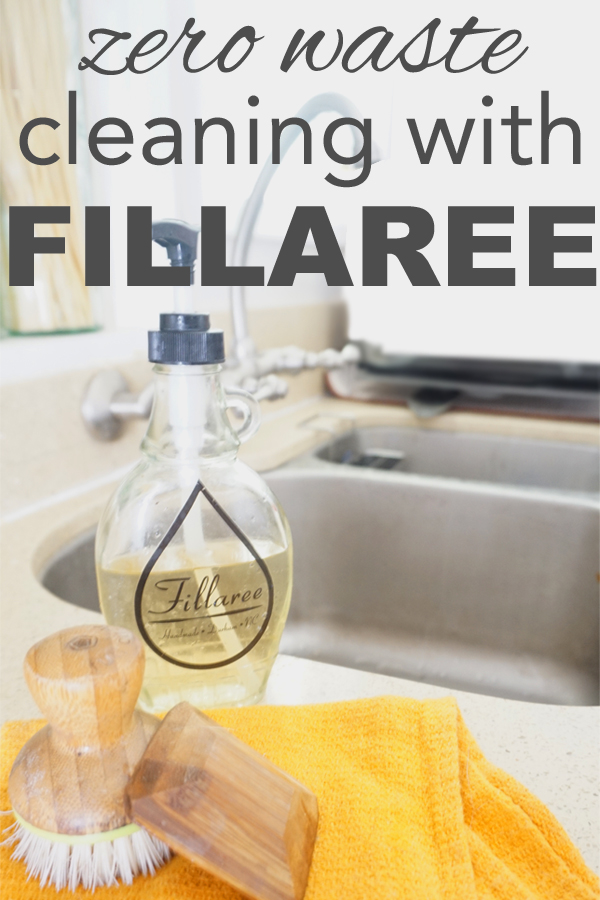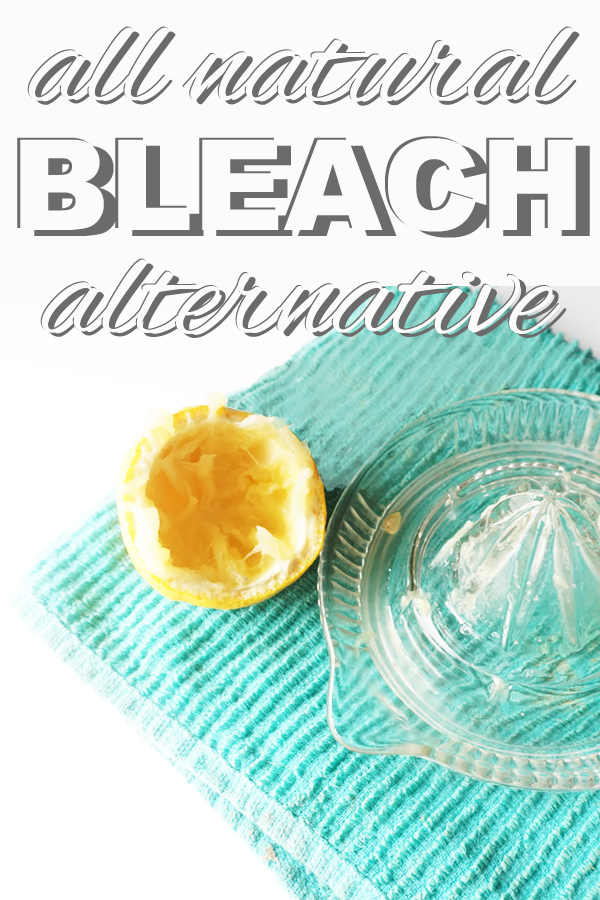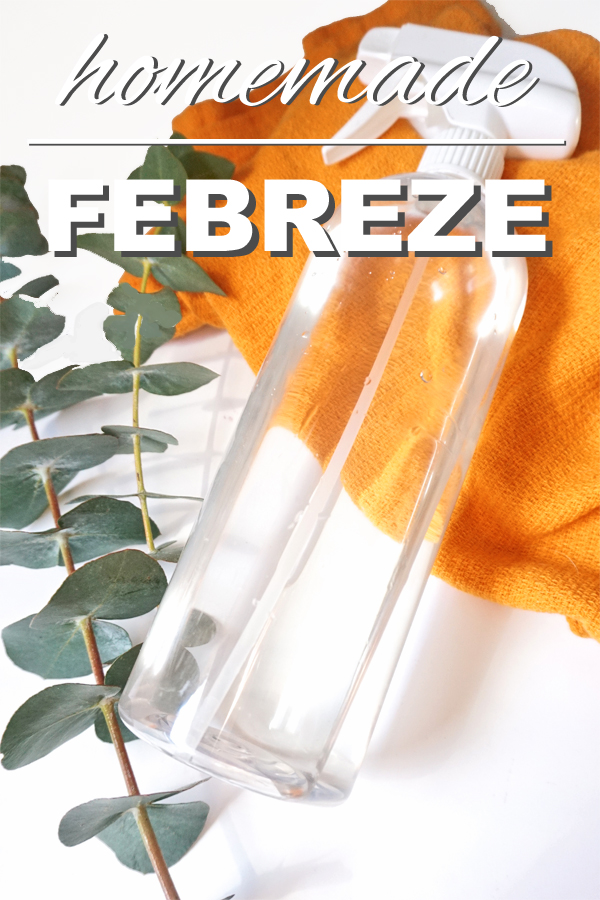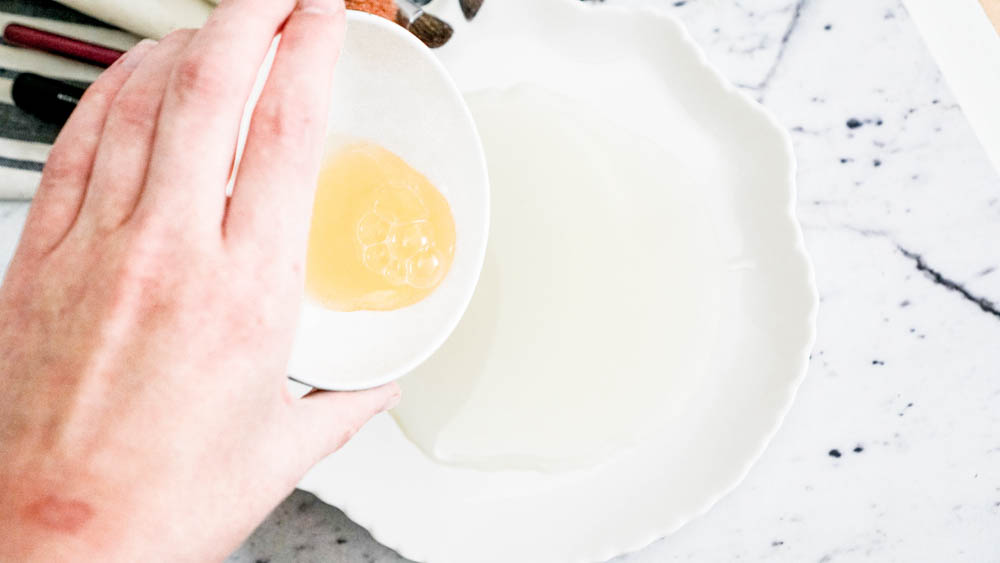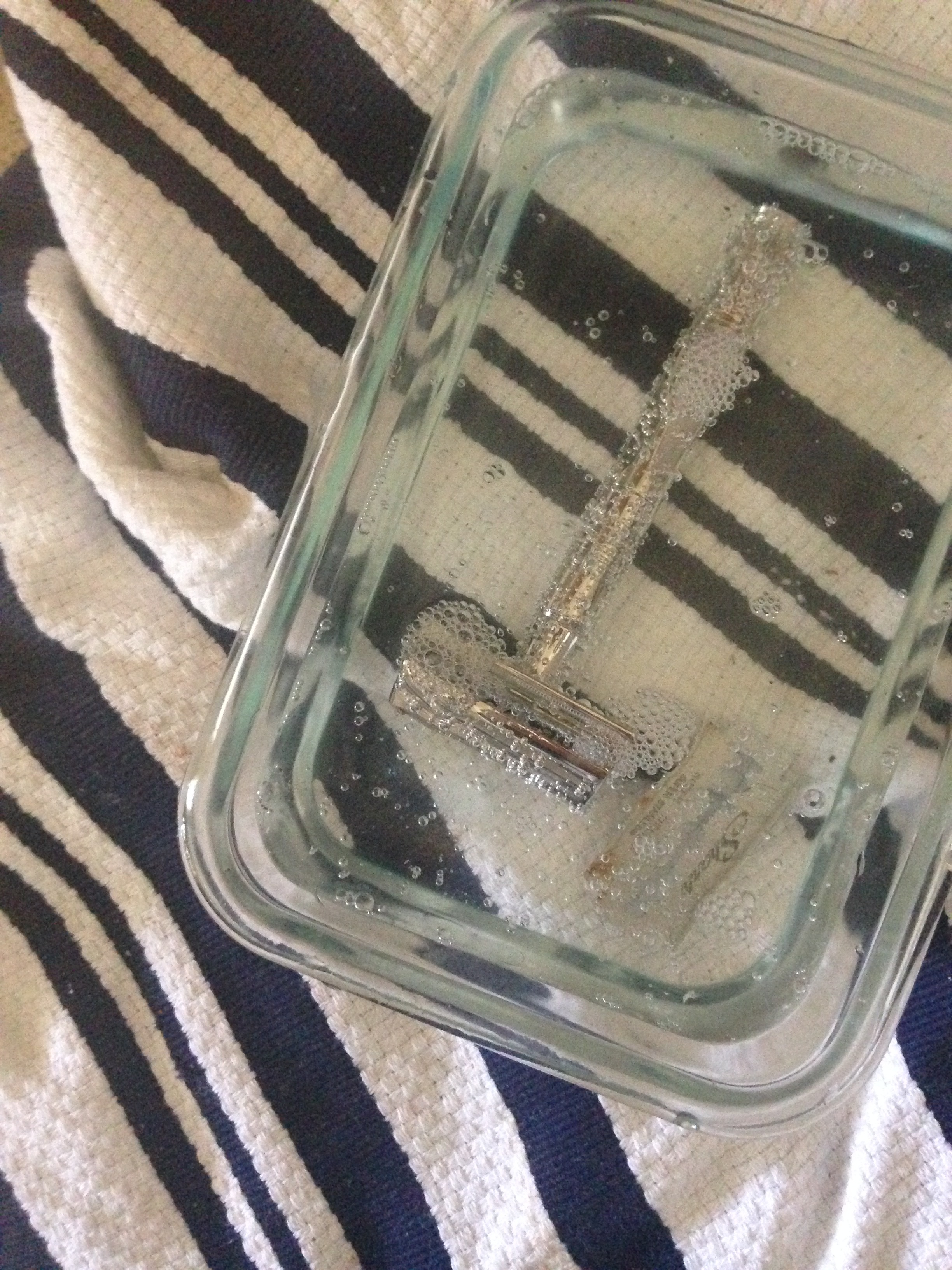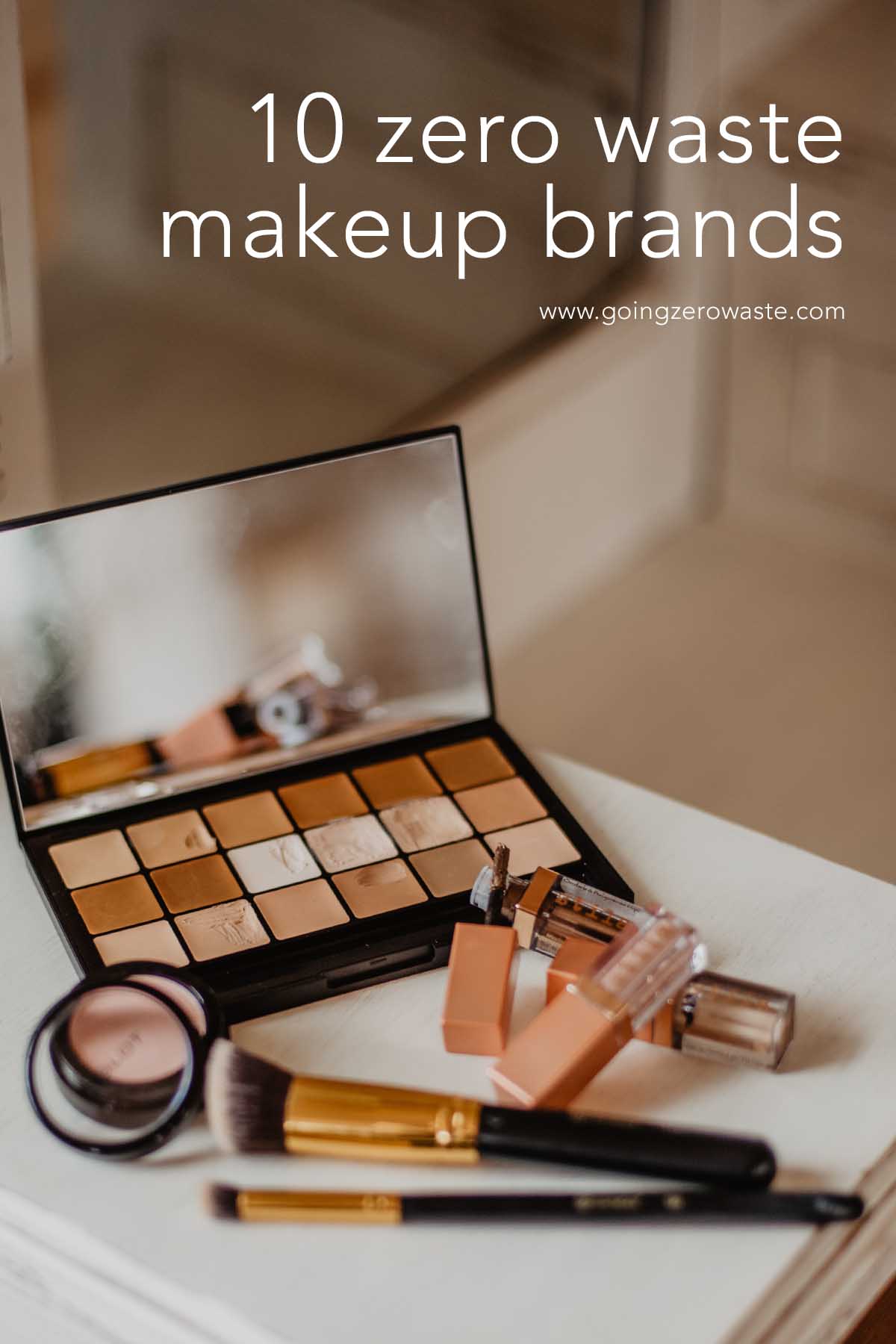Switching to a zero-waste cleaning routine has been one of the best things I’ve done for my wallet, health, and the environment.
Switching up my cleaning caddy was one of the very first zero-waste swaps I made and I couldn’t be happier. If you’re just starting to try and reduce your waste, I think starting with your cleaning caddy is a great idea.
This post contains affiliate linking for more information please see my disclosure policy.
Most conventional cleaning products are irritating to both the nose and throat due to artificial fragrances, volatile organic compounds (the same building blocks that create smog), and other toxic ingredients. Most conventional cleaners are also packaged in plastic and many of them aren’t biodegradable meaning they won’t break down in nature.
Why are we using cleaning products that will wind up in our waterways and natural environments if they’re toxic and won’t breakdown?
cleaning supplies:
First, let’s talk about the tools we clean with. Most cleaning tools in your house are probably made from plastic, and that’s a-ok!
There’s no reason to run out and replace your cleaning supplies with plastic-free counterparts. I still have a plastic toilet brush that will probably last me for the next decade.
But, once it finally breaks and is no longer functioning, I will probably upgrade to a nice, chic bamboo one. But, I’m also really intrigued by this steel and silicone brush… I don’t know if you’d ever have to replace it.
I keep all of my supplies in a metal cleaning caddy which was a Christmas gift from Justin a few years ago. You can find a similar one online or at a your local craft store.
In my caddy, I stash a feather duster, cleaning spray, wooden dish scrubs, a hand broom, a few reusable bar towels (they’re the BEST at absorbing water), a small container of baking soda, vinegar, and a metal dustpan.
Let’s take a closer look at some zero waste cleaning supplies:
Feather duster: You can certainly get a plastic-free feather duster. Just be aware that most plastic-free feather dusters are made from ostrich feathers and wooden handles. I recommend getting one-second hand, so that way it’s already in existence and you’re just keeping it out of the landfill. If you feel like feather dusters just move dust around, or onto the floor, you can always just vacuum it up afterward.
Rags: You can use these in lieu of feather dusters to wipe up dust, or other messes. I prefer 100% cotton bar towels. They do a great job at absorbing liquid and picking up dust.
Cleaning spray: This versatile all-purpose cleaning spray works on just about every surface, and in every room. It can be used to clean mirrors, windows, sinks, countertops and more.
Dish scrubs: I like bamboo dish brushes because they last such a long time. There are several different kinds too – like a bamboo bottle brush which has a long handle or a handheld pot brush which I use on my tub and tile. These can be composted at the end of their life.
Wooden hand broom + metal dust pan: If you want to sweep up some small accidents without breaking out the vacuum, get a hand broom and a metal dustpan. Mine are both secondhand so if you’re looking for something similar I’d check out an antique mall.
Wooden broom: When you have to sweep something up, but don’t want to break out the vacuum, a classic wooden broom is the way to go. Most brooms on the market are made from plastic (including the bristles!), but you can certainly still find wooden brooms with natural bristles online, and I’ve heard a few people have had great luck at TJMaxx with finding a bamboo swiffer with a reusable and washable pad.
Wooden toilet brush: Most toilet brushes are made from plastic. But, there are several options like a bamboo one or the steel and silicone brush I mentioned earlier.
Mop: Finding a plastic-free mop is easy is you stick with what I like to call the old-school janitor mop. Justin insisted on having this sort of mop and since he felt so passionately about it, I told him he could have his mop if he did all the mopping. He accepted and it’s probably the best purchase I’ve ever made.
Vacuum: I personally have a Dyson Animal, and I can’t recommend it highly enough. Dyson offers a lifetime warranty, so if you do buy one of their vacuums you can feel pretty good about that purchase because heir vacuums are built to last. Fun fact: dust is compostable. Most carpet is made from plastic, but if you have 100% wool or silk rugs you can compost what’s in your vacuum.
cleaning recipes:
I like to DIY my cleaning products because it’s soooo cheap, easy, and doesn’t take much time at all. There’s also the added benefit of knowing exactly what ingredients are in your cleaners.
However, there are a few really great cleaning brands out their like blueland. They sell tablets that you mix with water in your own home, they’re also cruelty-free, zero waste, and biodegradable.
Here are a few of my favorite recipes.
Tub scrub – This stuff is amazing and will make your tub look spotless.
All-purpose cleaning spray - I use this to clean pretty much my whole house.
Orange peel vinegar cleaner – All-purpose cleaner you can use on just about any surface.
Toilet cleaner – If you want to keep your toilet bowl looking nice, give these fun DIY toilet cleaner bombs a try.
Bleach – An all-natural bleach alternative that works.
Makeup brush cleaner – Because makeup brushes get dirty too.
To get all of my cleaning recipes, be sure to check out my book 101 Ways to Go Zero Waste!
areas of the home:
Now that you have a good idea of which tools and recipes you might want to try, here’s a little run down of how both Justin and I clean the house.
kitchen:
Now, I typically tackle the kitchen.
After making a big meal, I tend to wash the dishes using either a DIY dish soap (recipe in my book 101 Ways to Go Zero Waste) or one like Filaree.
I use my bamboo dish scrubs for things that need to be hand washed and load the dishwasher. Dishwashers do save more water than handwashing so if you have a dishwasher, load it up!
I typically use cast iron pans when cooking so here’s a blog post on how to clean those pans, if you have any which I highly recommend because they’re awesome and they’ll last forrrevverrrr.
Then lastly I wipe down my counters, oven and sink with my all-purpose cleaning spray and a rag.
bedroom:
Now, I have a dog who just loves to snuggle in our bed which isn’t super great. So, we make sure to change our sheets every week, and always keep the pillows and top sheet covered so she isn’t rubbing all over what we directly sleep on.
One of the best ways to clean out the air in the bedroom (dog) is to simply open the window!
If you’re looking for tips on laundry, be sure to pick up a copy of my book! I’m also very spoiled because Justin does all the laundry and hangs everything to dry. It’s a total dream.
And, be sure to check out my blog post, if you’re interested in finding organic and sustainable linens for your bed.
bathroom:
I also typically clean the bathroom, and swear by my tub scrub. Seriously. Go read the comments on that post. Everyone is obsessed. I spread the scrub all around the tub and then use a bamboo scrubber, specifically for the bathroom, to wipe away any grime.
Then I use the all-purpose cleaning spray for the toilet, mirror, and sink. I use my old plastic toilet brush for inside the bowl and rags for everything else.
floors:
Since every room has floors, I figured it’d be best to have this as a sperate entry. Justin also tackles all of the flooring. He vacuums every other day with our Dyson because Nala sheds like crazy.
Around once a month he hits the floors with a mop. He just puts a little bit of Dr. Bronners soap in the bucket to clean the floors.
Well, that’s it. That’s our big bi-weekly cleaning routine. Do you have any zero waste cleaning tips and tricks up your sleeve?














